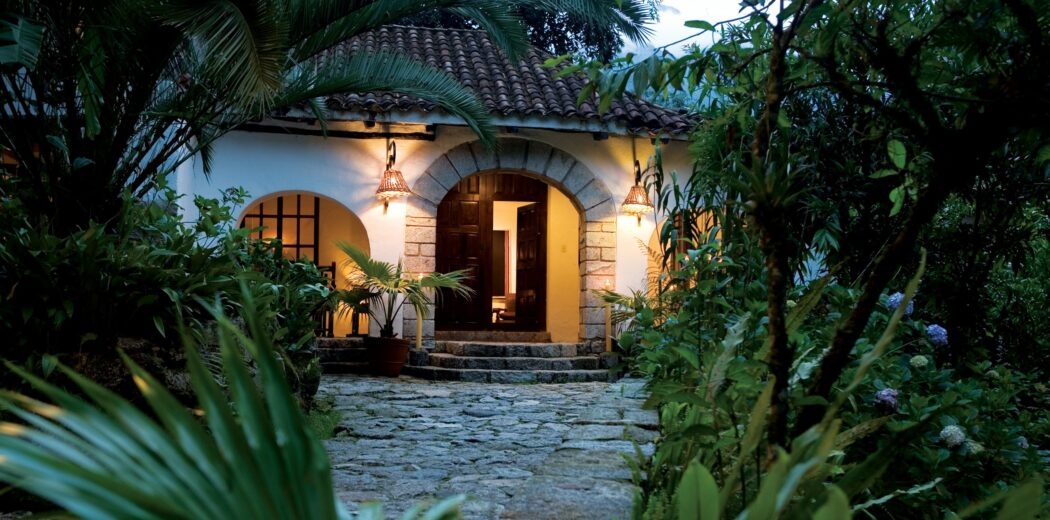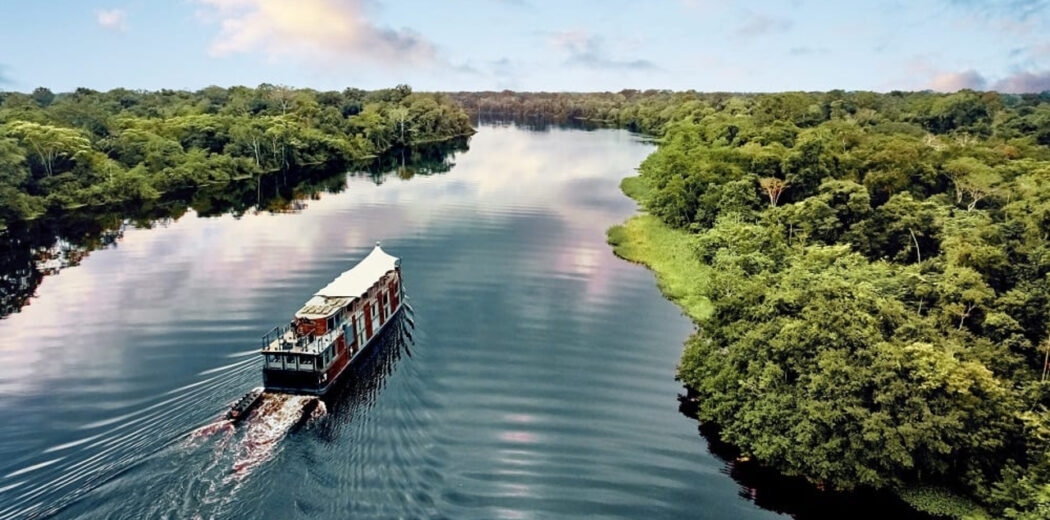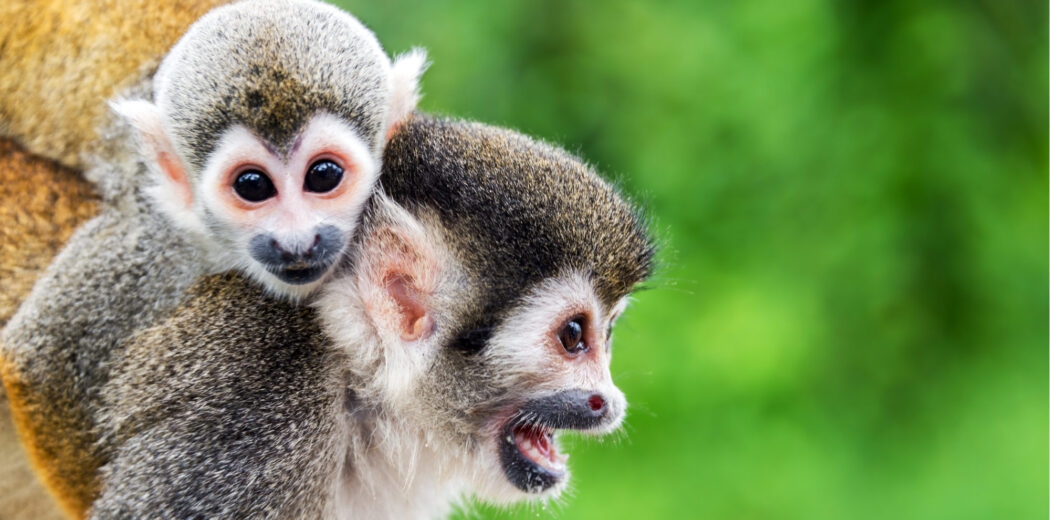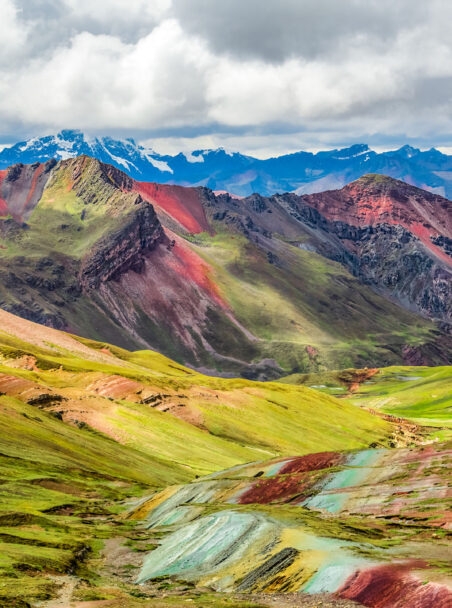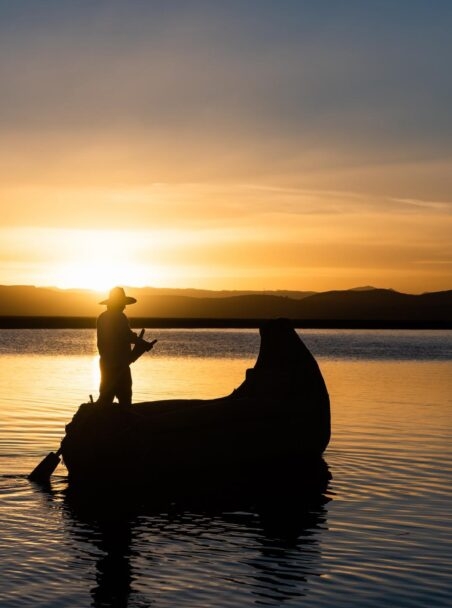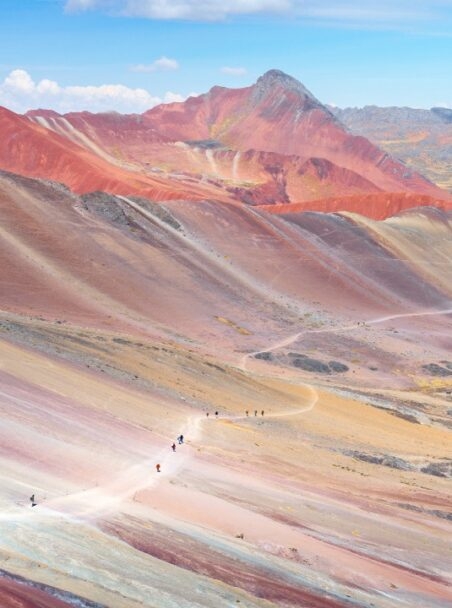Over the past several years, Peru has become increasingly famous for its food. Peruvian restaurants have proliferated across the globe and travelling foodies have flocked to this South American nation for an authentic taste of its culinary culture. But what makes it so alluring?
Like many of the world’s most beloved cuisines, Peruvian food is built on a diverse foundation. Indigenous ingredients and cooking techniques are fused with influences from Europe, Asia and Africa, creating a multifaceted and complex culinary repertoire.
Basic elements like bold citrus, spicy peppers and staple starches come together in unique combinations, complemented by delightfully simple snacks and flavourful drinks. Many of the country’s tastiest treats, from ceviche and cuy to papas and pisco, are widely recognised symbols of Peruvian culture – and no trip to Peru is complete with trying them.
At Jacada we love organising food tours in Lima, cooking classes with local chefs and authentic culinary experiences from the Amazon to the Andes. Whether you’re planning a trip to Peru or simply curious about its phenomenal fare, here’s our ultimate guide to Peruvian cuisine.

The staple ingredients in Peruvian cuisine
Many of the most widespread Peruvian food traditions have certain ingredients in common. When it comes to the staples of Peru’s cuisine, potatoes might be the first thing that comes to mind; it’s an oft-cited fact that the country grows more than 4,000 different kinds. They come in all shapes, sizes and hues, from vibrant purple fingerlings to bright orange sweet potatoes.
Beyond potatoes, the most ubiquitous starch in Peruvian cooking is probably rice. Quinoa is also common, especially in the Andes; it’s been cultivated there for several thousand years and has long been consumed by Indigenous groups like the Quechua and Aymara. You’ll also find corn (or maize) in all kinds of classic dishes and various forms.
Fruits and vegetables play a prominent role too. Perhaps the most iconic is ají (chilli pepper), and in particular ají amarillo, with its spicy kick and bright yellow colour. Fruits and fruit juices are everywhere, and many savoury dishes are brought to life with a squeeze of citrus. Make sure to try lúcuma and chirimoya: two distinctive fruits that don’t taste quite like anything else.
Seafood lovers will find plenty of fresh fish and shellfish, especially on the Pacific coast, and beef, pork and chicken are common sources of protein. Adventurous eaters might want to try alpaca and cuy (guinea pig), both traditional in the Andean region. There are also several varieties of Peruvian cheese, and lots of traditional dishes include eggs – often hard-boiled.
Traditional Peruvian dishes
Some Peruvian dishes have transcended the country’s borders and can be found all over the world; others are highly regional specialties that you’ll have to travel to taste. Here are a few to put at the top of your list.

Seafood specialties
Peru’s most famous seafood dish is ceviche: a combination of white fish, lime juice, red onion, ají and salt. It’s refreshing, tangy and slightly spicy – a unique flavour profile that contrasts perfectly with the crunchy corn kernels and sweet potato often served alongside it. The leftover juice, leche de tigre, is a delicacy in and of itself.
A close cousin of ceviche, tiradito is probably the most recognisable example of nikkei (Japanese-Peruvian fusion) cuisine. The main difference is that the fish in tiradito is sliced into thin pieces and served raw, whereas the key to ceviche is letting the chunks of fish soak in the marinade for long enough to transform their texture (kind of like cooking without heat).
Another classic seafood dish is jalea: a fried seafood medley that might include fish, shrimp, squid and more. It’s served with various sauces and sides like sweet potatoes, corn and plantains. Then there’s the hearty chupe de camarones, a sort of shrimp chowder, and parihuela, a heavily spiced seafood soup.

Meat and potatoes
Several traditional Peruvian dishes are centred on potatoes. There’s causa, a kind of casserole with layers of yellow potato purée, avocado, hard-boiled egg and chicken or fish. Papas a la huancaína are less visually impressive but just as delicious, consisting of boiled potatoes smothered in a rich yellow sauce. And the indulgent papa rellena is basically a ball of mashed potato stuffed with meat and deep-fried.
Different types of meat take the spotlight in Peruvian main dishes. The simplest is pollo a la brasa (roast chicken), which is usually served with a green sauce flavoured by huacatay (black mint). Then there’s ají de gallina: chicken in a creamy sauce similar to that of papas a la huancaína and accompanied by potatoes, rice, black olives and hard-boiled egg.
Lomo saltado is a common Peruvian beef dish and an icon of chifa cuisine, which blends Peruvian and Chinese traditions. The beef is marinated in soy sauce, sautéed with onions, tomatoes and peppers and served with rice and fried potatoes. Cau cau is a highly traditional dish with African influences, combining beef tripe with potatoes, peas and ají amarillo.

An unmissable insider experience
Travel up to 12,400 feet (3,780 metres) to a remote mountain village, unchanged for hundreds of years, to enjoy a traditionally prepared Pachamanca lunch.
This rustic dish involves a specific cooking method. Volcanic stones are heated over a fire, and different types of meat such as beef, pork and chicken, along with delicious Andean potatoes, sweet potatoes and corn, are layered on top. The fire is covered with banana leaves and earth to form an oven, which is opened up after a couple of hours to reveal the smoky, flavoursome dish underneath.
You’ll also spend time with the Quechua community here, who still wear traditional dress, made themselves from alpaca wool using techniques handed down through generations. Join in with their traditional ceremony of adorning the alpacas with coloured pom–poms – used to indicate which family they belong to, before observing the process of dyeing and spinning alpaca fibres to make garments.

Peruvian street food & snacks
Sampling the wide array of mouthwatering street foods is one of our favourite things to do in Peru. In fact, we can arrange tours of Lima and Cusco that invite you to discover the highlights of Peruvian street food culture alongside a local expert.
Along the way you might try tamales or pan con chicharrón (a sandwich with crispy pork and sweet potato), both of which are often accompanied by salsa criolla (red onion, ají amarillo, lime juice and cilantro). We also suggest sampling the legendary anticuchos: skewered beef hearts in a zesty marinade. For something a bit more soothing, grab a cup of steaming emoliente from a street vendor; this thick herbal brew is said to heal anything from a cold to indigestion.
The most popular Peruvian snacks are simple, salty and crunchy – and several of them involve corn. There’s cancha (large corn kernels that are salted and fried until crispy) and palomitas (popcorn). Another crispy snack is chifles (plantain chips), arguably a more flavourful and nutritious alternative to potato chips (though you’ll find those too, and in various colours).

Popular Peruvian drinks
In Peru, traditional food is often accompanied by traditional drinks – and there are plenty to try. Start with the strikingly yellow Inca Kola, a national symbol in the form of soda. An equally colourful and sweet – though more natural – drink is chicha morada, a dark purple beverage made from purple corn, spices and pineapple peel.
The word ‘chicha’ can be used to describe a variety of drinks, but chicha de jora is among the most traditional. Sometimes likened to beer, this alcoholic beverage is made from fermented corn and dates all the way back to the Inca Empire. Archaeological evidence even suggests that it might have been made at Machu Picchu.
Of course, we can’t discuss Peruvian drinks without mentioning pisco. This strong spirit is made from fermented grape juice and is the main ingredient in the emblematic pisco sour: a cocktail that combines it with lime juice, sugar syrup and a layer of foamy egg white drizzled with bitters.

Our experts' favourite Pisco experience
Learn how to make Peru’s national cocktail, the Pisco Sour, in a private guided masterclass. Your expert mixologist will explain everything from the drink’s provenance, to how the grapes are fermented, whilst guiding you through the steps to make your own. Finish by drinking your delicious creation.
Ready to plan your foodie adventure in Peru?
Whatever you want from your foodie adventure in Peru, our travel designers are ready to help







